
8 minute read
ESPERIMENTO BISERNO
NICCOLÒ MARZICHI LENZI, L’EREDE ANTINORI ALLA TENUTA DI BISERNO, CI ACCOGLIE PER FARE UN PUNTO SU 20 ANNI DI LAVORO A BIBBONA Niccolò Marzichi Lenzi, the Antinori heir to Tenuta di Biserno, gives us a warm welcome to remember 20 years of work in Bibbona
TENUTA DI BISERNO SI TROVA AL CONFINE CON LO STORICO TERRITORIO DI BOLGHERI, MA
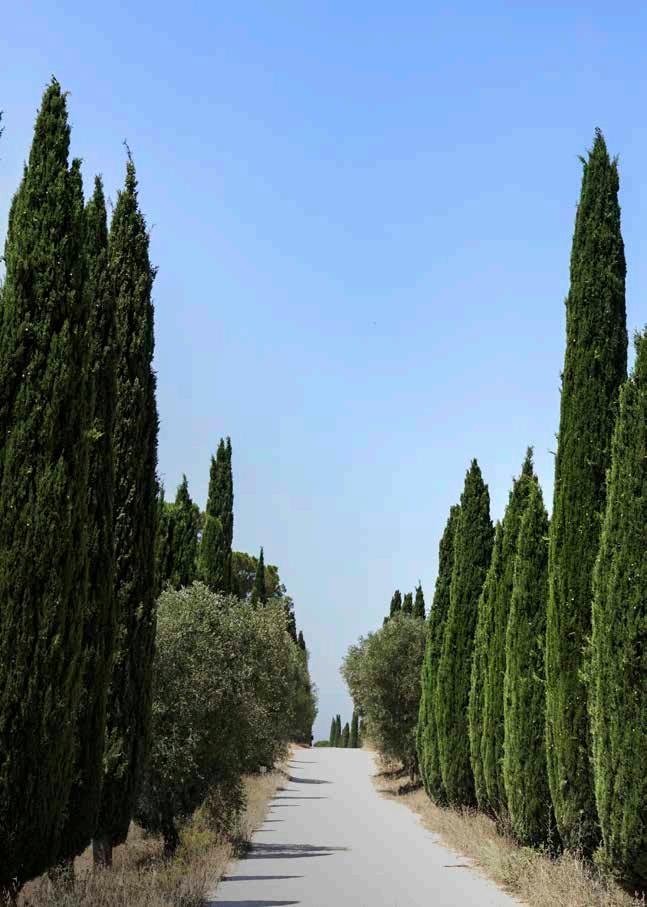
La Tenuta di Biserno è nata dalla volontà della famiglia Antinori di riunirsi per dare vita a un proge o distintivo. Nel 2001, Piero e Lodovico, insieme al nipote Niccolò Marzichi Lenzi (figlio di Ilaria Antinori), decisero di dedicare a vigneto alcuni terreni di loro proprietà, ricchi di argille e rocce calcaree lasciati fino ad allora incolti. Situati a 15 chilometri da Bolgheri, nel comune di Bibbona, erano perfe i per la coltivazione di uve dai connotati internazionali e, grazie alla vicinanza del mare, godevano di un microclima ideale.
Merita ricordare, a questo punto, che stiamo parlando di una famiglia da oltre 600 anni nel mondo del vino e che, negli anni Quaranta, dall’a ività e dalla collaborazione tra Niccolò Antinori (padre di Piero e Ludovico) e Mario Incisa della Rocche a - cognati per aver rispe ivamente sposato due sorelle, Carlo a e Clarice della Gherardesca - prese avvio la trasformazione di Bolgheri in uno dei poli più prome enti della moderna geografia enologica europea, a partire dal Sassicaia.
Come e forse ancor più del genitore, Piero e Lodovico si annoverano tra i pesi massimi della moderna viticoltura italiana. Piero Antinori ha reso la cantina di famiglia uno dei gruppi più importanti del mondo nel comparto vino e tra, le tante, ha inventato anche quel capolavoro di Supertuscan, noto come Tignanello. Lodovico Antinori è stato l’inventore di fenomeni come Ornellaia e Masseto a Bolgheri, di cui è anche lui tra i padri fondatori come grande territorio vinicolo.
Ecco presto de o, in estrema sintesi, il milieu nel quale è nato e si è formato Niccolò Marzichi Lenzi che, a proposito dell’esperimento Biserno, lui stesso ci racconta: “Ognuno di noi ha svolto il proprio ruolo, a testa bassa, concentrati sull’obbie ivo da raggiungere, senza utilizzare strategie di marketing particolari, operando via via le necessarie correzioni per arrivare alla produzione di vini rigorosamente rappresentativi di un terroir e al tempo stesso con una cifra stilistica riconoscibile”. Oggi i vini della Tenuta
Tenuta di Biserno was born out of the desire of the Antinori family to come together to create a special project. In 2001, Piero and Lodovico the two iconic brothers of Tuscan winegrowing, together with their nephew Niccolò Marzichi Lenzi (Ilaria Antinori’s son), decided to allocate some of their land that was rich in clay and limestone rocks and had been le untouched until then to vineyards. Located 15 kilometres from Bolgheri in the municipality of Bibbona, they were perfect for growing grapes with international connotations and, thanks to how near they were to the sea, enjoyed the perfect microclimate.
At this point it is worth remembering that we are talking about a family that has been a part of the world of wine for 600 years, and that in the 1940s the business and collaboration between Niccolò Antinori (Piero and Ludovico’s father) and Mario Incisa della Rocche a (brothers-in-law due to having married two sisters respectively, Carlo a and Clarice della Gherardesca) began to transform Bolgheri into one of the most promising poles of modern European oenological geography, starting with the Sassicaia
Piero and Ludovico rank among the heavyweights of modern Italian viticulture like and perhaps even more so than their father. Piero Antinori made the family winery one of the world’s most important groups in the wine business and, among many others, also invented the Supertuscan masterpiece known as Tignanello Lodovico Antinori was the inventor of phenomena such as Ornellaia and Masseto in Bolgheri, of which he is also one of the founding fathers of the great wine territory.
In a nutshell, here is the wine milieu where Niccolò Marzichi Lenzi was born and trained who, with regard to the Biserno experiment, he himself tells us , “Each of us played our role, with our heads down, focused on the objective to be achieved, without using any particular marketing strategies, gradually making the necessary corrections to arrive at the production of wines that are strictly representative of a terroir and at the same time with a recognisable sty- di Biserno sono considerati una perla del suolo maremmano grazie alle intuizioni dei due grandi zii, complementari fra loro: la creatività e la sensibilità di Lodovico Antinori, la lungimiranza e la profonda conoscenza del mondo del vino di Piero, che trasmesse a Niccolò gli consentono oggi di portare avanti il proge o come Amministratore Delegato e ambasciatore di quelle eccellenze. “Oggi produciamo 500.000 bo iglie annue e siamo presenti sui mercati di 60 Paesi. Ma a Biserno siamo sempre in fermento, alla ricerca di un continuo miglioramento” spiega Niccolò. listic character.” Today, the wines of Tenuta di Biserno are considered a pearl of the Maremma soil, thanks to the intuitions of two great pioneers of the winemaking world, who complemented each other: the creativity and sensitivity of Ludovico Antinori, the far-sightedness and profound knowledge of the world of wine of Piero, which conveyed to Niccolò allow him today to play a full leading role as Managing Director and ambassador of those excellences. “Today we produce 500,000 bo les annually and are present in 60 countries. But in Biserno we are always in turmoil in pursuit of continuous improvement,” explains the second generation. Every wine has its own history and particular connotations, like the pure Vermentino Occhione, inspired in its name and label by the aquatic bird found on the dunes of Marina di Bibbona. At first, Biserno lacked white grape varieties; but a neighbouring vine grower who wanted to retire proposed his own, which turned out to be ideal for growing Vermentino. So “almost by chance a limited production was born, but with immediate and unexpected success.” Occhione is a wine blessed with great pleasantness, rich in aromas and freshness, provided by “the natural acidity and minerality of the soils” and a low alcohol content. The Insoglio del cinghiale was the first wine produced and a launch pad into sales for Niccolò. A red wine that is already linked to the Maremma in its name (indicating the muddy and watery place where animals go to root and roll), le ing itself be enriched by Syrah blended with Merlot and Cabernet Sauvignon.
Ogni vino ha una sua storia e dei connotati particolari, come il Vermentino in purezza Occhione, ispirato nel nome e nell’etiche a all’uccello acquatico presente sulle dune di Marina di Bibbona. All’inizio a Biserno mancavano i vitigni a bacca bianca; ma un vignaiolo confinante che voleva ritirarsi, gli propose il suo rivelatosi poi perfetto per la coltivazione del Vermentino. “Così, quasi per caso - prosegue Marzichi Lenzi - ne è nata una produzione limitata ma dal successo immediato e inaspe ato”. Occhione è vino dotato di grande piacevolezza, ricco di profumi e freschezza, data “dall’acidità naturale e dalla mineralità dei suoli” e un grado alcolico contenuto. L’Insoglio del cinghiale è stato il primo vino prodotto e trampolino di lancio nel settore vendite per Niccolò. Un rosso che si lega alla Maremma già nel nome (che indica il luogo fangoso e acquitrinoso dove l’animale si reca a grufolare e a rotolarsi) lasciandosi impreziosire dal Syrah in blend con Merlot e Cabernet Sauvignon. Il Pino di Biserno e il Biserno sono i fratelli maggiori, i flag wines aziendali: “Il primo esprime un cara ere più esuberante capace di compensare l’animo volutamente più serio e aristocratico del secondo, entrambi dotati di quelle peculiarità indispensabili per poterne godere impreziositi dal tempo che passa. Le degustazioni seguono l’ordine proposto dall’azienda partendo dalle annate correnti per poi apprezzarne la longevità”.
The Pino di Biserno and the Biserno are the older brothers, the flagship wines: “The former expresses a more exuberant character capable of compensating for the deliberately more serious and aristocratic spirit of the la er, both of which are endowed with the indispensable peculiarities so as to be able to enjoy them as they are enhanced by the passing of time. The tastings follow the order suggested by the company, starting with the current vintages and then appreciating their longevity.

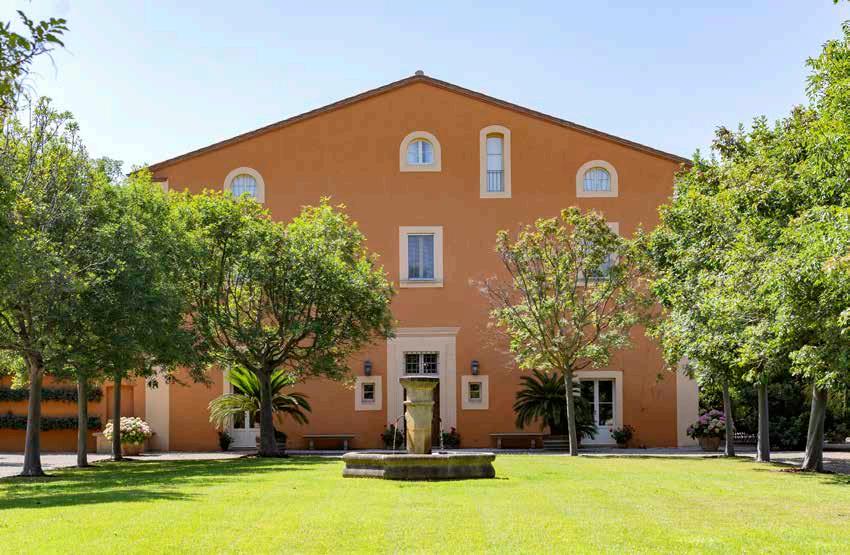
IL TERROIR ECCEZIONALE, CONGLOMERATO UNICO DI BOLGHERI, LE CONDIZIONI NATURALI, L’ESPOSIZIONE AI VENTI, IL SUOLO E IL CLIMA
PERMETTONO VITIGNI DI ALTISSIMA QUALITÀ FAVORENDO VINI UNICI, AUTENTICI E RICONOSCIBILI IN BASSO: DUE RITRATTI DI NICCOLÒ MARZICHI LENZI CHE CI HA GUIDATI NELLA DEGUSTAZIONE
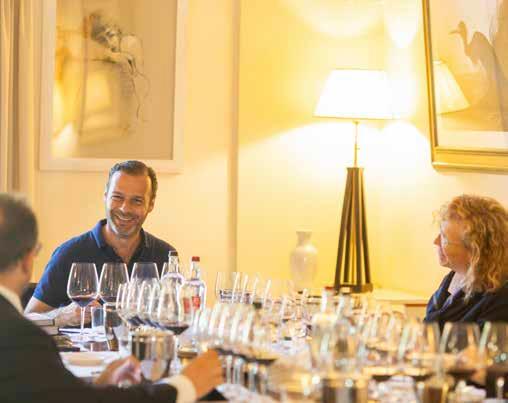
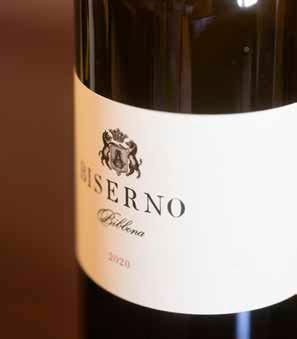


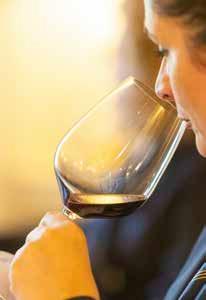
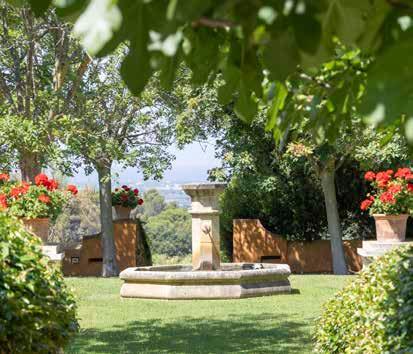
Biserno 2009
Merlot 34%, Cabernet Sauvignon 30%, Cabernet Franc 29%,Petit Verdot 7% Vivaci accenni granato. Intenso e profondo, rivela immediati sentori di confe ura di more e mélange di fiori secchi, arricchiti da sbuffi di foglia di pomodoro, muschio e cioccolato. Armonioso, equilibrato e dai tannini aristocratici, esprime ancora longevità. Persistente e saporito di eucalipto.
Vivid hints of garnet. Intense and deep, it reveals immediate hints of blackberry jam and a mélange of dried flowers, enriched by puffs of tomato leaf, musk and chocolate. Harmonious, balanced and with aristocratic tannins, it is an expression of longevity. Persistent and flavoursome eucalyptus.
2021
Merlot 38%, Cabernet Sauvignon 22%, Cabernet Franc 17%, Petit Verdot 15%, Altro 8%
Carminio con brillanti riflessi rubino. Profumi intriganti di mirto, rosa canina appassita, foglia di fico, macis, macchia mediterranea, tabacco Virginia e note balsamiche. Il sapore è fresco e invitante, impreziosito dal tannino brioso e ben integrato. Flavour di amarena e persistenza di agrume.
Carmine with strong ruby highlights. Intriguing aromas of myrtle, dried rosehips, fig leaf, mace, maquis, Virginia tobacco and balsamic notes. The flavour is fresh and inviting, enhanced by lively, wellintegrated tannin. Black cherry flavours with a persistence of citrus.
Biserno 2020
Cabernet Franc 32%, Cabernet Sauvignon 32%, Merlot 30%,Petit Verdot 6% Rubino pieno e vivo. Corredo olfa ivo di spiccata personalità: gelée all’amarena, giaggiolo appassito e cannella s’intrecciano con toni di polvere di cacao, legno di cedro e so obosco. Bocca raffinata, tannini signorili e persistenza agrumata che chiude su echi balsamici di liquirizia e tamarindo.
Full and lively ruby. An olfactory bouquet with a distinct personality: black cherry gelée, wilted iris and cinnamon intertwine with tones of cocoa powder, cedar wood and undergrowth. Refined in the mouth, elegant tannins and a lingering citrus that closes on balsamic echoes of liquorice and tamarind.
Vermentino 100%
Paglierino tenue. L’olfa o è introdo o da piacevoli riconoscimenti di pesca tabacchiera, papaya e salvia, insieme a una delicata fragranza di gelsomino, lime e note gessose. Al sorso è dinamico e saporito di litchi, completato dalla piacevole sapidità in una chiusura dai ricordi di mandorla.
Faint straw colour. The nose is introduced by pleasant hints of tobacco peach, papaya and sage, together with a delicate jasmine and lime fragrance with chalky notes. On the palate, it is dynamic and lychee-flavoured, complemented by a pleasant savouriness with an almond-like finish.
Merlot 42%, Cabernet Franc 38%, Petit Verdot 12%, Cabernet Sauvignon 8% Carminio intenso. Bouquet complesso con rimandi di prugne in confe ura, pot-pourri di rose e so obosco che si intrecciano e si alternano a fragranze di caffè e china. Il gusto è avvolgente ed elegante, ricco di estra o, cara erizzato da freschezza e tannini raffinati. Finale di erbe officinali. Intense carmine. A complex bouquet with hints of jammy plums, a potpourri of roses and undergrowth that intertwine and alternate with fragrances of coffee and cinchona. The taste is enveloping and elegant, rich in extracts, characterised by freshness and refined tannins. Medicinal herb finish.
INSOGLIO 2021
Syrah 45%, Merlot 28%, Cabernet Sauvignon 7% wine tasting by AIS Toscana commission
Rubino vivace con riflessi amaranto. Gradevole debu o al ribes, corniola, iris e rosmarino che abbracciano nuance di pepe nero di Sarawak e humus. Al palato l’acidità e il tannino ancora in evoluzione sono piacevolmente accompagnati dal gustoso ritorno fru ato, in un epilogo di agrume e rabarbaro.
Bright ruby with amaranth hues. A pleasant currant, carnelian, iris and rosemary debut, embracing nuances of Sarawak black pepper and hummous. On the palate, the still developing acidity and tannin are pleasantly accompanied by the tasty fruity return, in an epilogue of citrus and rhubarb.











